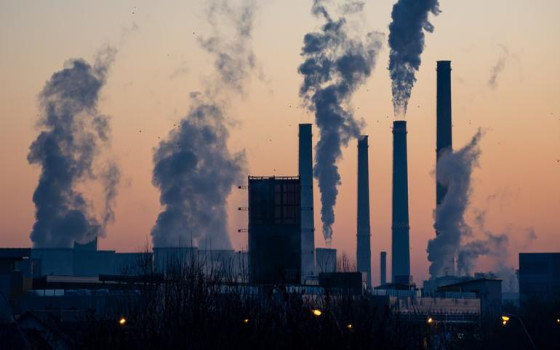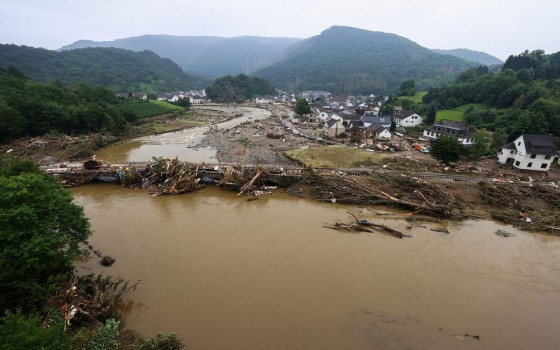
The United Nations warns: "We have entered a critical phase in the climate crisis".. The transition to renewable energy can prevent 4 to 7 million deaths from air pollution annually.

- Europe and Arabs
- Friday , 25 October 2024 7:30 AM GMT
New York: Europe and the Arabs
A new UN report has warned that annual greenhouse gas emissions have reached their highest level ever, and that urgent action must be taken to prevent catastrophic temperature increases and avoid the worst effects of climate change.
In short, countries must start reducing emissions immediately, according to the 2024 Emissions Gap Report issued by the United Nations Environment Program yesterday, Thursday.
The Executive Director of the program, Inger Andersen, said: "We have entered a critical phase in the climate crisis. We need global mobilization on an unprecedented scale and pace, starting now before the next round of climate pledges." According to the UN daily news bulletin
Andersen warned that if this does not happen, the goal of limiting the rise in the Earth's temperature to no more than 1.5 degrees Celsius, stipulated in the Paris Agreement on climate change, "will soon disappear."
Climate goals could evaporate
The report, launched at the 16th Conference of the Parties to the Convention on Biological Diversity in Cali, Colombia, tracks the gap between where global emissions are headed with countries’ current commitments and where they need to be to limit warming to well below 2°C and pursue 1.5°C in line with the temperature targets set out in the 2015 Paris Agreement on climate change.
According to the report, the 1.5°C goal will disappear within a few years unless countries collectively commit to cutting annual greenhouse gas emissions by 42% by 2030 and 57% by 2035 in the next round of Nationally Determined Contributions (NDCs) and backing that up with rapid action.
The NDCs set out steps to reduce emissions and adapt to the impacts of climate change – from droughts and floods to extreme weather events – and secure the necessary funds, updating the plans every five years, the next time in early 2025 ahead of the COP30 climate talks in Brazil.
“On the brink”
The report comes at a time when governments are failing to fully deliver on their promises. Without significant cuts in greenhouse gas emissions, the world could face an inevitable, catastrophic temperature rise of 3.1 degrees Celsius, the report said.
The emissions gap is not an abstract concept, said UN Secretary-General António Guterres. In fact, there is a direct link between rising emissions and the increasing frequency and severity of climate disasters. “We are on the brink,” he warned in a video message. “Either leaders close the emissions gap or we are hurtling towards climate catastrophe, with the poorest and most vulnerable suffering the most.”
The role of technology
The UN climate change conference COP29, due to be held in Baku, Azerbaijan, in November, should serve as a starting point for detailed discussion of these new ambitious national plans, the secretary-general said, calling the event “a countdown for countries to submit new national climate action plans by next year.”
“Governments have agreed to align these plans with 1.5 degrees,” he added.
The UN chief said this meant governments must cut all greenhouse gas emissions, and urged the largest economies – the G20, which account for around 80% of all emissions – to take the lead in this process. There is hope, he said.
“The report shows that affordable and existing technologies can deliver the emissions reductions we need by 2030 and 2035 to meet the 1.5°C limit, but only with increased ambition and support,” he said.
Clean energy can make a difference
The report shows significant potential to cut emissions by up to 31 gigatonnes of carbon dioxide by 2030, which translates to around 52% of reported emissions in 2023, and by 41 gigatonnes by 2035, helping to meet the 1.5°C target in both years. Increasing the use of solar photovoltaics and wind power could contribute 27% of the total reduction in 2030 and 38% by 2035. In addition, protecting forests could provide about 20% of the necessary reductions in both years.
Other effective strategies include improving energy efficiency, electrifying various sectors, and shifting away from fossil fuels in buildings, transport and industry, according to the report.
However, the report said that realizing even a fraction of this potential will require unprecedented international cooperation and a comprehensive approach by governments, focusing on maximizing social, economic and environmental benefits while minimizing trade-offs.












No Comments Found